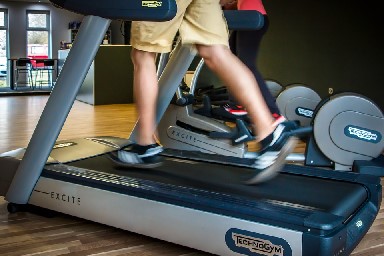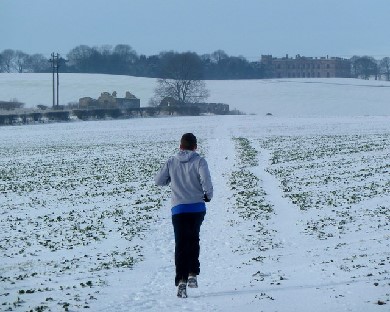If you find marathon training hard, training for a marathon during the winters will be quite intimidating. Stop worrying about mileage, as you now have to endure the weather and several other challenging factors. You have little choice but to start preparing for your race during the winter if the race is scheduled for early next year. However, winter marathon training does not necessarily have to be about icy pavements and freezing yourself during outdoor workouts.

Here are some helpful tips to help you prepare for winter marathon training:
Mix Outdoor and Indoor Training
As you have less daylight and limited hours for outdoor workouts, you may be tempted to make fewer trips to the gym. Don’t limit yourself to working out at home. Even though running indoors on a treadmill or working out at home is a safe way to train for a marathon during the winter, it is important that you also incorporate some kind of outdoor activity, such as running in the park.
Find the perfect mix of outdoor and indoor training by including at least two outdoor runs during a week. If you are brave enough, considering it thrice a week will guarantee you a vigorous training session despite the weather.
Using a Treadmill
After deciding on how often you want to run outdoors, set realistic goals for treadmill runs. You can move your track/interval training to the treadmill. This will help you practice at different running speeds for getting ahead of obstacles. You can use the following tips to benefit from a treadmill workout:
Pace Training
The key to optimal treadmill workouts is pace training. You have to focus on your pace and not on your heart rate. Without the external stimuli that you encounter while running outdoors, your heart rate will be lower. The convenience of the treadmill providing you the momentum to move also makes a difference. It is important you follow pace training in addition to heart rate training to get the desired results from your treadmill workouts.

Run on an Incline
When you run without an incline, it is like running on a slightly downward slope. Make sure to kick it up with at least some or 1% incline for replicating your normal running style. Once you gain fitness and strength to endure more, consider elevating this up to 2%.
Don't Stagnate
If you run in only one direction with zero elevation or terrain, it stresses the same muscles each time you run. To fight this, keep manipulating the grade frequently. It also helps to change the pacing for stimulating different muscle groups during the running workout.
Running Outdoors
Winter marathon training might make you visualize yourself running through snow-laden trees. This greeting card image gives you little motivation to actually run outdoors in the freezing cold. Anyone who has previously done running sessions in the winter will understand the initial frost will lead to a cold melt. It is this moisture that's your worst enemy in the cold. As you get wet while you run, you begin to feel cold and there's little or no gear that can save you from it.
No athlete wants to get sick during the winters. You have to stay dry when running outdoors in the winter. In fact, colder days are just fine. However, in case it’s raining for at least an hour, running outdoors can be a bad idea. Even though the weather can be great most of the time, the roads can be wet. Don’t push too many limits and keep yourself dry and safe if it’s raining.

Intensify to Achieve More
Your marathon training plan cannot be etched in stone if it has to be implemented in winters. Modify the distances and dates for a smooth winter training session. In case of extreme winter conditions, shorten your run or increase your pace to accomplish more. If you fall sick, rest up for quick recovery. Training while you are sick will only make you feel worse. After you have recovered completely, intensify your previously planned training sessions to make up for the loss.
Winters are not the time to take risks or to strive hard for pushing limitations. If you don’t take care of yourself during the cold season, muscle strain is inevitable.
Final Thoughts
The winter air is guaranteed to keep your spirits high. Improvised and practical winter marathon training plan will have positive results on your stamina and strength. If you enjoy training through snowy and icy conditions, this is the time for you to hit the road. If you would rather train at home, mix your workouts with treadmill sessions, squats and stretches for getting ready for the big race.
Keywords: winter marathon training